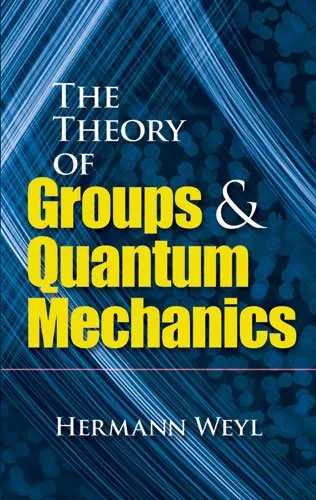The Theory of Groups and Quantum Mechanics
4.5
Reviews from our users

You Can Ask your questions from this book's AI after Login
Each download or ask from book AI costs 2 points. To earn more free points, please visit the Points Guide Page and complete some valuable actions.Introduction to "The Theory of Groups and Quantum Mechanics"
"The Theory of Groups and Quantum Mechanics," written by Hermann Weyl, is a foundational text that eloquently bridges the intricate interplay between group theory and the field of quantum mechanics. Published in a time when the fruits of quantum theory were just beginning to ripen, the book presents itself as a masterclass in rigor, clarity, and elegance. Weyl's work not only elucidates the mathematical backbone underpinning quantum mechanics but also demonstrates the deep and nuanced philosophical implications of group theory in contemporary physics. This introduction dives deep into the book's core ideas, its relevance, and its lasting impact on modern science.
Detailed Summary of the Book
The book begins by introducing the reader to the fundamental principles of group theory, a mathematical discipline devoted to the study of symmetry. Weyl meticulously develops the theoretical underpinnings required to grasp this subject, making it accessible to physicists unfamiliar with abstract mathematics. He integrates algebraic concepts, such as groups, rings, and fields, into a coherent narrative that seamlessly prepares the ground for applications to quantum mechanics.
Building upon this foundation, Weyl transitions into the heart of the book: the role of group theory in quantum mechanics. He establishes the intrinsic connection between the symmetry principles of physics and mathematical objects, such as Lie groups and their representations. These principles are closely tied to conservation laws, derived from Noether's theorem, and provide profound insight into the invariances governing physical systems. Chapters involving the representation theory of groups shine a bright light on the quantum states and operators that characterize the subatomic world.
Throughout, the book maintains a delicate balance between the abstract and the physical. Weyl crafts vivid examples and explanations to demonstrate how symmetry dictates the behavior of quantum physical systems, exploring areas such as rotational invariance, spin states, and the classification of particles. He also traverses advanced topics like the relationship between the unitary representations of Lie groups and quantum field theory, placing special emphasis on the emerging understanding of the time. In doing so, "The Theory of Groups and Quantum Mechanics" lays the groundwork for generations of physicists and mathematicians, inspiring decades of theoretical progress.
Key Takeaways
- Bridging Mathematics and Physics: The book unites abstract mathematical principles, like group theory, with their profound applications to quantum mechanics.
- Importance of Symmetry: It highlights symmetry as a guiding principle in physics, determining conservation laws and describing fundamental properties of nature.
- Versatility of Group Theory: Through detailed examples, Weyl demonstrates how group theory applies across disciplines, from particle physics to crystallography.
- Foundations of Representation Theory: A crucial takeaway is how the representation theory of groups underpins the algebraic structure of quantum mechanics.
- Enduring Influence: The book remains influential in both theoretical physics and mathematics, still inspiring researchers to explore these interconnected disciplines.
Famous Quotes from the Book
"My work always tried to unite the truth with the beautiful, but when I had to choose one or the other, I usually chose the beautiful."
This quote encapsulates the spirit of the book. Weyl’s commitment to the aesthetic and intellectual elegance of theoretical frameworks shines through every page of the text.
"To grasp the symmetries of nature is to uncover the fundamental laws of the universe."
Why This Book Matters
"The Theory of Groups and Quantum Mechanics" remains a cornerstone of mathematical physics because it articulates with clarity and depth the profound connections between two seemingly disparate fields. Weyl’s work provided not just tools but also fresh paradigms for understanding the universe. The synergy between symmetry, mathematics, and physics described in this book inspired the development of areas like quantum field theory, the standard model of particle physics, and even the theory of general relativity. Without this foundation, modern physics as we know it might never have achieved its full potential.
Moreover, Weyl’s approach emphasizes the beauty and power of abstraction in science, a lesson that transcends physics and mathematics. His work teaches us that the pursuit of knowledge is as much about aesthetics and creativity as it is about precision and rigor. By reading this book, audiences—whether seasoned scholars or curious novices—will find inspiration and profound insight into the nature of reality, continuing the legacy of one of the 20th century's great minds.
Free Direct Download
Get Free Access to Download this and other Thousands of Books (Join Now)
For read this book you need PDF Reader Software like Foxit Reader


